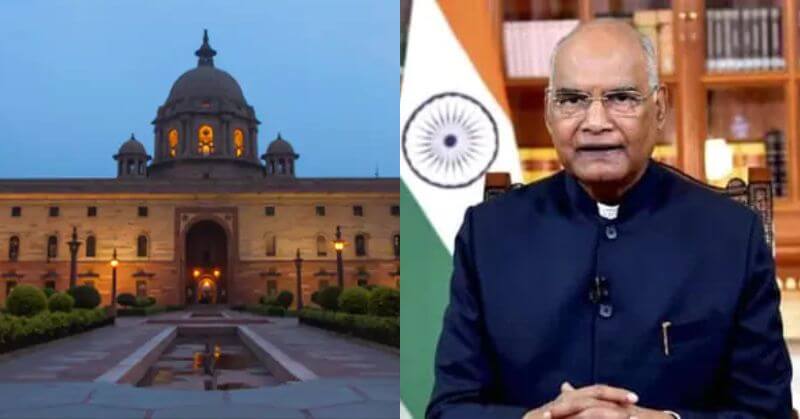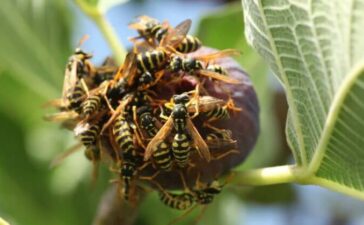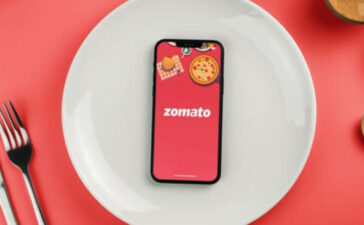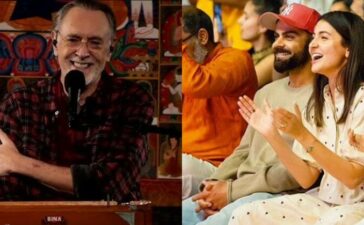The term of President Ram Nath Kovind expires on July 25. Before that, on July 18, there will be an election to fill his position, and on July 21, the results of the election will be declared and we will learn the new President’s name.
According to the United States, India’s presidential election procedure differs from that of certain other democracies. In this article, we outline the steps involved in choosing the president of India, including who is eligible to vote, the voting process, and other supporting procedures.
Electoral Process
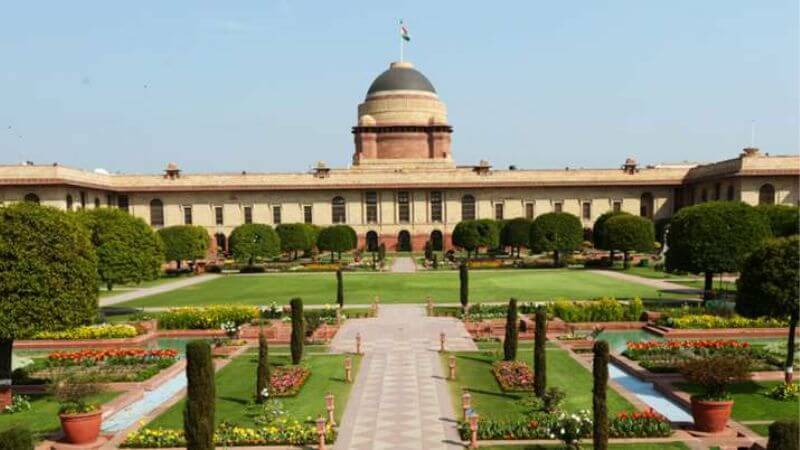
An electoral college made up of members of both Houses of Parliament, state legislators, and representatives from Delhi and Puducherry elects the President. The members of state legislative councils and the nominees to the Rajya Sabha, Lok Sabha, and other assemblies do not make up the electoral college.
Due to the fact that the Lok Sabha and Rajya Sabha have 2 and 12 nominated members respectively, there are 543 and 233 voters from each house, making up a total of 776 voters in the Parliament. The overall number of electors in the Presidential electoral college is 4809, which includes 4033 votes cast by the MLAs of all the states except Delhi and Puducherry.
Prior Requirements For The Post Of Indian President
According to Article 58 of the Indian Constitution, a candidate for the position of President must be an Indian citizen and at least 35 years old. Additionally, just like a member of the Lok Sabha, a candidate for president may be disqualified if they have a paid position with the Union of India or a state government.
Value Of Vote
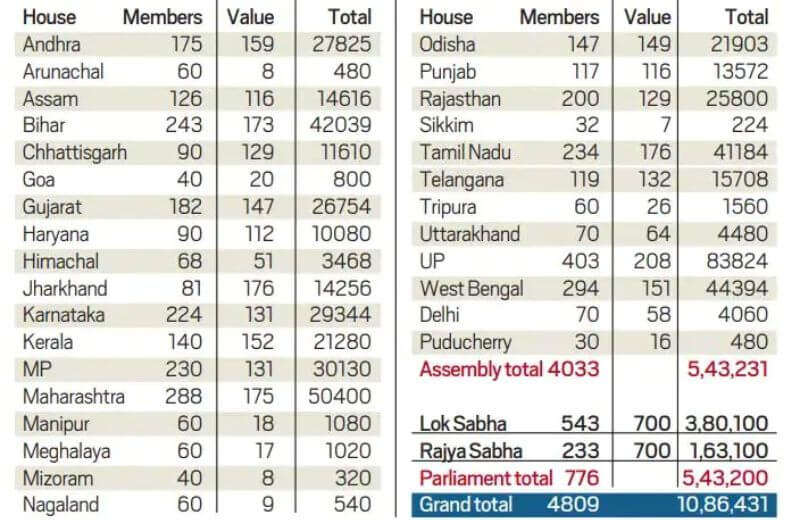
The population of each state as of the 1971 Census is used to weigh the votes. Each MLA’s vote has a different value, ranging from 208 in Uttar Pradesh to 7 in Sikkim. Sikkim’s 32 MLAs contribute a total of 224 votes, compared to UP’s 403 MLAs who give a total of 83824 votes to the electoral pool. 5.43 lakh total weighted votes have been cast across all assemblies.
In its final recommendation, the Jammu and Kashmir Delimitation Commission suggested that the region have a 90-member assembly. J&K won’t be able to vote in the presidential election because there isn’t yet an elected house in place.
Where Do The Opposition And The Ruling Coalition Stand?
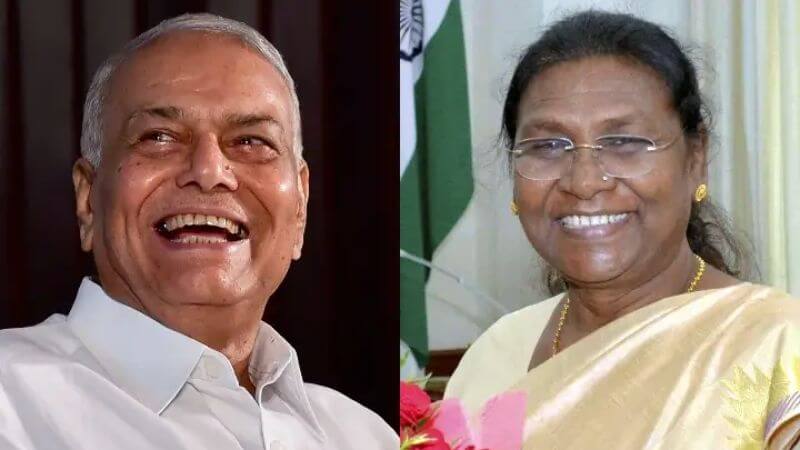
While the NDA led by the BJP is currently far ahead of the halfway point, it is still well behind the Congress and its partners. The NDA has 48% of the votes (BJP – 42% and allies – 6%), the Congress has 13.5% and its allies have 10.5%. The 57 vacant Rajya Sabha seats are not included in the vote totals. The DMK, Shiv Sena, NCP, JMM, and other smaller parties like the Muslim League, VCK, RSP, and MDMK are some of these allies.
The BJP is counting on the YSRCP, the BJD, and a few other parties to back its nominee. The NDA candidate would get through the halfway point with support from the YSRCP or BJD. The TRS, which formerly was seen to be on the fence and even supported the government on some important bills, has recently started criticising the BJP. The AAP is at odds with both the BJP and Congress.
Fiercely Contested Previous Elections
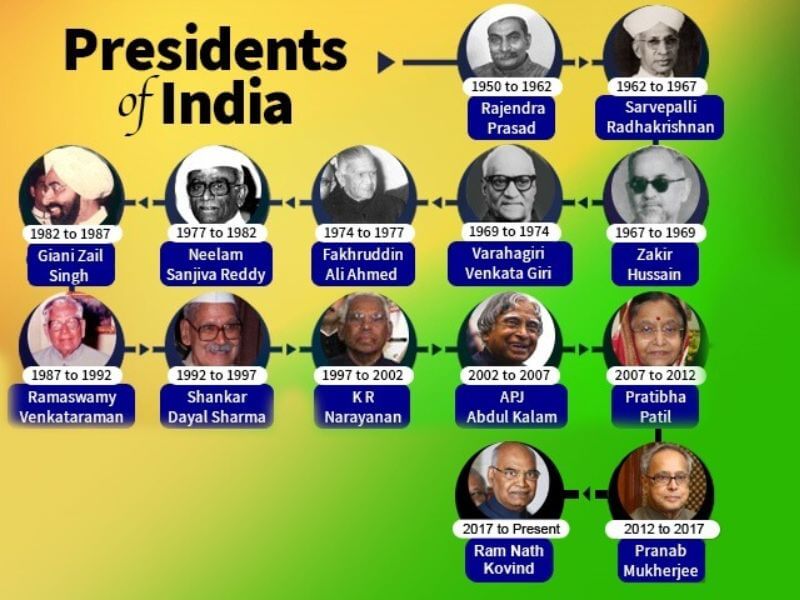
- In 1952, there was no contest in the first election. With 5,074,400 votes, Rajendra Prasad won. With a vote total of 1954, Chaudhary Hari Ram entered the race because he didn’t want Prasad to succeed without opposition. KT Shah, a member of the Constituent Assembly and a former student at the London School of Economics, was the left-field candidate and received 92,827 votes.
- Congress fielded Prasad for the second time in 1957. He received 4,59,698 votes, defeating Nagendra Narayan Das and Chowdhry Hari Ram.
- Sarvapalli Radhakrishnan, who served as Vice President under President Prasad, was a candidate for the Congress in 1962. In opposition to Chowdhry Hari Ram and Yamuna Prasad Trisulia, he received 5,53,067 votes.
- Vice President Zakir Hussain, a Congress candidate in 1967, defeated Kota Subbarao with 471244 votes. The unanimous choice of the opposition was Subbarao.
- In 1969, the abrupt death of President Hussain made this election necessary, and it was the most divisive of all. According to Article 65(1) of the Constitution, Vice-President V. V. Giri took over as acting President before resigning in July 1969 in both roles. Prime Minister Indira Gandhi and a group of Congress veterans known as the Syndicate were at odds, and things got out of hand when the party nominated Neelam Sanjeeva Reddy for the election while Gandhi supported Giri, who was running as an independent. Reddy was defeated by Giri with 401515 votes.
- The Revolutionary Socialist Party’s Tridib Chaudhuri, a Lok Sabha MP, and Fakhruddin Ali Ahmed, a veteran of the opposition, were both on the 1974 Congress’s ballot. As opposed to Chaudhuri’s 1,896,196, Ahmed received 7,65,587 votes.
- In 1977, B D Jatti, the vice president, assumed the presidency in Ahmed’s absence. 37 candidates submitted their paperwork for the election; however, all but one were disqualified after inspection. Neelam Sanjiva Reddy of Congress, who won the election, was the only one who qualified.
- Giani Zail Singh of the Congress defeated H. R. Khanna in 1982 with 7,54,113 votes. A. Khanna, a Supreme Court judge who resigned in 1977 in objection to the selection of M. H. Baig as Chief Justice of India, was a candidate for nine opposition parties.
- In 1987, the incumbent Vice President, R. Venkataraman, was challenged by legal stalwart and former Supreme Court Justice V. R. Krishna Iyer, who was easily defeated. President Singh, whose relations with Prime Minister Rajiv Gandhi had reached a poor point, was encouraged to run as an independent candidate by several Congress dissidents and Devi Lal of the Lok Dal, but he declined. This is when the elections started to take on political relevance.
- Shanker Dayal Sharma of the Congress received 6,75,804 votes in 1992, easily defeating George Gilbert Swell of the opposition. Swell was a former deputy speaker of the Lok Sabha, a former ambassador to Norway and Burma, and a tribal leader who was instrumental in the movement that resulted in the statehood of Meghalaya.
- K R Narayanan, supported by the opposition BJP and supported by United Front government parties, won one of the most lopsided elections ever in 1997, receiving 956,290 votes to former Chief Election Commissioner T N Seshan’s 50,361 votes.
- The Congress and the majority of the opposition parties chose to support the BJP’s pick, scientist A P J Abdul Kalam, in 2002. Captain Lakshmi Sahgal played on the left field. Sahgal was defeated handily by Kalam (9,22,884).
- With 6,38,116 votes versus BJP candidate Bhairon Singh Shekhawat, Pratibha Patil, the UPA-Left nominee, became India’s first female president in 2007.
- With 713,763 votes against PA Sangma of the BJP, UPA candidate Pranab Mukherjee was elected as the 13th President in 2012.
- Kovind’s opponent in the most recent election, which took place in 2017, was Meira Kumar, a former speaker of the Lok Sabha. 17 opposition parties backed her, while the JD (U) chose to back Kovind. With 7,02,044 votes, Kovind won.
The head of state of the Republic of India is the President. Both the formal head of the executive branch and the supreme commander of the Indian Armed Forces is the President.
Follow Us: Facebook | Instagram | Twitter |
Entertales is on YouTube; click here to subscribe for the latest videos and updates.


